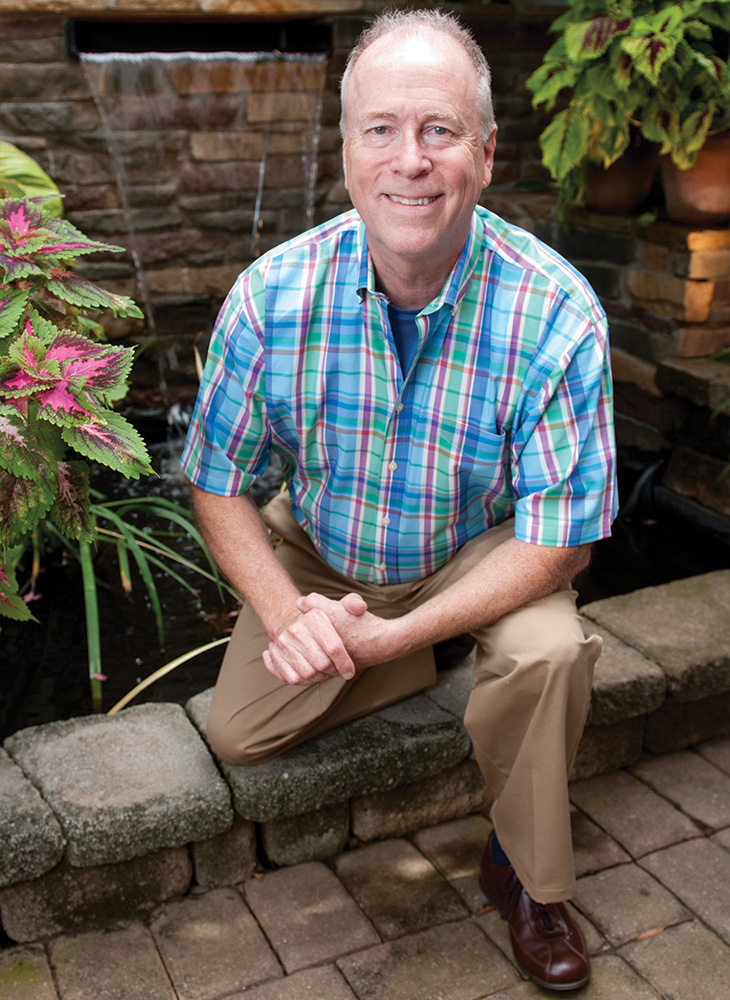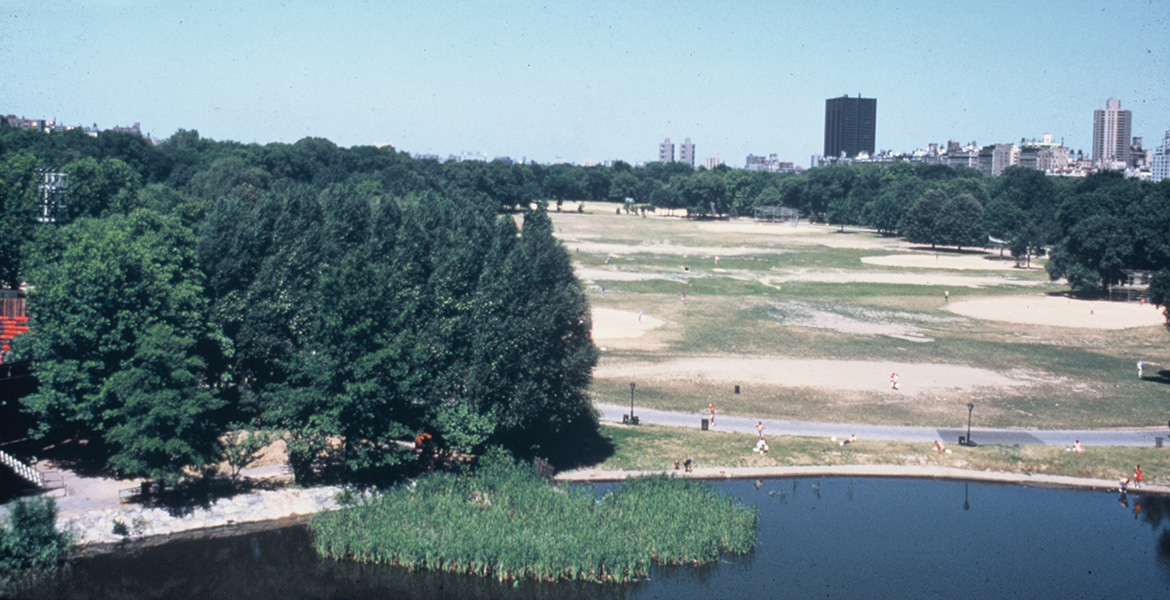
OSU alumnus receives top honor for storied career in landscape architecture
Wednesday, April 27, 2022
Media Contact: Mack Burke | Editorial Coordinator | 405-744-5540 | editor@okstate.edu
At a glance, Barrett Kays appears unassuming.
He enjoys traveling, well-placed jokes and quality time with the people he loves.
Kays has also impacted the lives of millions of people across the United States and amassed a long list of awards for his career in landscape architecture. His most recent accolade is one of the most prestigious in the industry — the LaGasse Medal.
A Stillwater native, Kays grew up with an appreciation for nature. His father, Dr. Raymond Kays, had a green thumb but bled orange and left a lasting impact at OSU. He proudly served as the head of the OSU Department of Horticulture from 1962 to 1976. In 1998, the William Raymond and Charlotte Wheatley Kays Endowed Scholarship for Horticulture and Landscape Architecture was established in recognition of the couple’s contributions to horticulture and gardening. Raymond instilled that same love for the environment in Barrett, who followed in his father’s footsteps, graduating from OSU with a horticulture degree in 1971.
Building on his time at OSU, Kays earned a graduate degree in landscape architecture from North Carolina State University and began a Ph.D. program in soil science, an area of study that would set him on a course to revitalize some of the nation’s most iconic parks and landscape features.

“I felt that an area that was not well understood by the vast majority of landscape architects was soil or landscape soils and how that plays into a construction site,” Kays said. “They understood the horticulture side in greenhouses and nurseries, but it’s very different in a construction site.”
After completing his doctorate, Kays’ soil science expertise distinguished him from colleagues, affording him incredible career opportunities. One of his most notable and complex projects was restoring the Great Lawn at Central Park in New York City.
In the early ’90s, the Great Lawn was an environmental disaster, Kays said.
Before it was converted into the Great Lawn, the area was known as the Croton Reservoir. But the reservoir was never properly drained to create the lawn. This led to areas of the lawn liquefying, creating sinkholes in the public space. When it rained, the lawn was a muddy mess. During dry seasons, it was littered with bald patches from erosion and leaked sediment into Belvedere Lake.
“It was like a site from hell,” Kays said. “It was very complex and had all these different problems.”
The Central Park Conservancy and Parks and Recreation Department in New York interviewed three firms, and Kays’ firm, Barrett Kays & Associates, P.A., stood out as the obvious hire.
“I was pretty quickly hired within a few days because I was the only one who understood how to fix the horrendous problems they had,” Kays said. “It made sense to me and our team. I was amazed that the New York City landscape architects were dumbfounded by how we did it.”
The hard work to restore the lawn commenced. Kays directed his team in the design and implementation of multiple drainage systems that were constructed to withstand both a 100-year rainstorm and a 100-year drought.
Although the construction site was full of hard work and complicated details, Kays still found ways to have fun.
“I had a great group of folks I worked with,” Kays said. “They would listen to me talk and sort of tease me about my accent. Then I would tease them about the fact that they had to hire a southern boy to come up and fix their project.”
All of Kays’ hard work paid off, and the Great Lawn was completed in 1997. In 1998, the American Society of Landscape Architects awarded him the Honor Award. He also won the Best of 1998 Site and Design Award. Twenty-five years later, Kays said the Great Lawn continues to outperform all expectations.
Another opportunity to preserve a public landscape led Kays to cross paths with fellow OSU horticulture alumnus Paul Redman.
Redman, a 1990 graduate, is president of Longwood Gardens in Pennsylvania. The gardens provide an immersive nature experience for 1.5 million guests annually. The hope, Redman said, is that the garden inspires guests to be stewards of Earth’s natural beauty.
When the Main Fountain Garden at Longwood began to deteriorate, Redman knew the mission was threatened, and he hired West 8 New York, who tabbed Kays as the consultant to oversee the garden’s restoration.

The renovation, like most of Kays’ work, was complex, requiring all construction site soil to be removed to make way for the installation of new infrastructure, such as electrical wiring and plumbing. The soil then had to be returned to the site.
“People don’t realize that soil is just as important as electricity or plumbing,” Redman said.“It serves as the palette for us to create beauty and fulfill our mission.”
Because of Kays’ innovation and work, the now 90-year-old fountain was maintained as a beautiful form of landscape art for millions of people to enjoy, Redman said.
As Kays’ reputation grew, other colleagues from across the nation took notice, eventually nominating him for the LaGasse Medal. He was awarded the medal in 2021 for his dedication to preserving and protecting major urban parks and landmarks.
Michael Holmes, OSU undergraduate landscape architecture program director, said it’s unsurprising that Kays won the prestigious award.
“Barrett’s reputation within landscape architecture and the environmental community is that of a leading expert in soil science,” Holmes said. “He brings this scientific aspect to landscape architecture that is pretty significant.”
Kays said winning the LaGasse Medal, which he likened to a lifetime achievement award, was an honorific milestone.
“I am very fortunate to get one,” Kays said. “The medal looks at the sum of your whole career and what you’ve done. It feels great that the leaders in my society recognized me in this way.”
Kays said the roots of his success were cultivated at OSU. He said his experience in Stillwater endowed him with fundamental skills needed to flourish in his continued education and trailblazing professional career.
Justin Quetone Moss, horticulture and landscape architecture department head, said he’s proud the department has a reputation for producing some of the best landscape graduates in the world.
“OSU is so well respected in the field that employers seek out our students,” Moss said. “Graduates like Dr. Kays are one of the reasons we have this reputation.”
To prepare graduates, the department offers hands-on experiences in its greenhouses and nurseries in Stillwater. Other hands-on experiences are available through internships across the country, most of them in the offices of OSU alumni. This network of loyal and true alumni also prepares students for success, equipping them with real-world experience to complement the training they receive on campus.
Of course, Redman said, faculty members deserve major credit for setting the program apart.
“[Faculty] are caring and nurturing and really provided a safe and welcoming place for me to learn and grow professionally,” Redman said. “If it weren’t for the faculty in that program, I wouldn’t even know I could have a career working in a public garden. They opened a door for me that changed my life.”
OSU horticulture faculty members get to know students and mentor them on a personal level, helping students develop professional goals and pairing those with coursework that showcases their talents.
“As faculty members, our job is to lay a foundation,” Holmes said. “We encourage our students that they can do big things internationally, nationally, even in small communities.
“Your career is whatever you make of it, that’s what an alumnus like Barrett shows us. And he has made fantastic things out of it."
Photos by: courtesy of Barrett Kays
Story by: Kylee Sutherland | STATE Magazine
